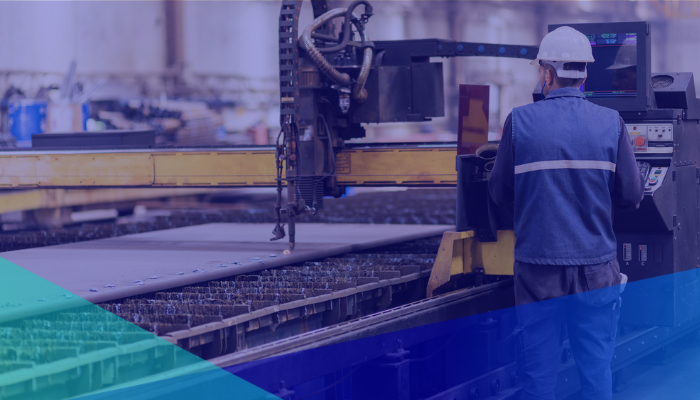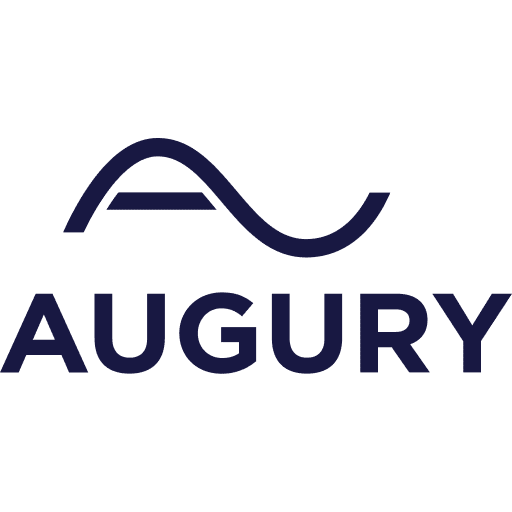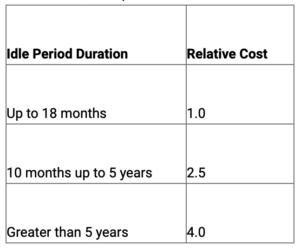
With so much uncertainty in the world economy, market forces prompt many companies to shut down an industrial or commercial facility or a major piece of equipment for an extended period. The owners may intend to reopen the plant and restart the equipment when conditions improve, but what will happen to that property and equipment over the months or years?
*This article was originally posted on HSB’s Blog
Executive summary
Michael P. Bove, P.E., Hartford Steam Boiler
Will time and neglect cause corrosion and other deterioration? Might vandals and thieves damage or steal property? How long will it be before the stored equipment is obsolete? You can’t just turn off the lights and lock the doors. An extended plant layup plan can help make sure your equipment works properly when you need it again.
Does it Make Sense to Close Down a Plant, Until Business Picks Up?
You can’t just turn off the lights and lock the doors. An extended plant layup plan can help make sure your equipment works properly when you need it again.
How to Manage the Risks When Idling Machinery and Equipment
There are inherent risks in the layup of machinery for an extended period. With proper planning and execution, these risks can be managed, reduced, or eliminated. When considering an extended layup, the goal is the cost-effective decommissioning, storage and eventual re-commissioning of the equipment and the facility. The time and cost associated with a layup must be carefully weighed against the potential time and repair cost that would result from simply shutting down the equipment and doing nothing. In this article, we will examine some of the major issues and recommended best practices for extended preservation of equipment.
Definitions: Is an Extended Layup Really in Your Plans?
These recommendations are for situations where the equipment or plant will be put back into regular use after a specified layup interval, or extended plant layup. This guide does not address seasonal layups or “mothballing.” It’s helpful to understand the definitions commonly used when discussing the shutdown and storage of property and equipment.
Short-term layup is also known as “seasonal layup.” Usually, this period extends for three months or less, so no equipment dismantling is involved. Little or no maintenance is performed and all components are left ready to run.
Extended layup could be anywhere from 3 to 24 months and may have an undetermined timeframe. Of course, an approximate time is essential for planning the decommissioning process. Typically, steps must be taken to prevent corrosion and air and moisture intrusion. Drainage may be necessary for fluids, temporary heaters or dehumidifiers could be required, and certain equipment may be isolated or disconnected.
Mothballing is similar to extended layup, but the timeframe is indefinite, well over 12 months. It would require major work and expense to restore operations. The owner may elect to sell off pieces of equipment, or the entire plant.
Planning: Keep it Practical and Convenient so the Work Gets Done
When executing an extended plant layup, a detailed plan should be prepared for each major piece of equipment or system. This plan might include: inspection, cleaning, isolation, occasional operation of components, required repairs or maintenance, corrosion protection and ongoing long-term storage requirements.
Documentation should be kept on the design, installation, operation and maintenance of the equipment. The plan should also identify required safety precautions, including lockout/tagout, an industry standard process that safely isolates equipment and machinery for maintenance and service. The goal of the lockout/tagout process is to document the steps taken to isolate the equipment, to prevent the unintended release of hazardous energy, and to warn personnel that the equipment should not be operated or touched.
Layup procedures not only must be effective, but also practical and convenient to implement. Complicated layup procedures are often ignored by plant personnel because they are too difficult to carry out. The key to a successful layup is the involvement of employees from across the company: operations, management, maintenance, engineering, environmental, and health and safety. Plant personnel will gain knowledge and experience from repeated layups that can improve efficiency and effectiveness and help prevent recurring equipment failures during outages.
The Key Components of an Extended Plant Layup Plan
Whenever any equipment is removed from service for layup, we recommend the owner consult the original equipment manufacturer (OEM) for their unit’s specific layup requirements. Most OEMs can provide guidelines on the maximum allowable shutdown interval before equipment requires protection. Key components of a layup plan include:
Duration: The anticipated length of a layup often defines the type and extent of procedures that need to be considered.
Time and Cost: The time and cost required for a successful restart of certain components or systems must be weighed against its condition and remaining useful life. The following are relative costs, as reported in “Guidelines for the Mothballing of Process Plants.”1
Re-commissioning: The limited amount of time permitted by a company’s business needs and operations to return a plant to service will often preclude the use of some preferred layup procedures. This time requirement can have a major impact on the type and extent of the layup procedures that are practical.
Plant Design: The design of the plant can affect the selection of the layup method for certain systems. It is essential that someone knowledgeable regarding plant design review the various layup methods considered for each plant system.
Plant Environment: Hot, humid sites require extensive corrosion protection. Hot dry sites such as desert areas can be affected by sand and dust infiltration. In northern climates, freeze protection must be incorporated. Outdoor equipment may require extra protection. Certain locations may need additional security to prevent theft or vandalism. Potential rodent infestation and damage to wiring and electronics should be considered.
Documentation. Since employees may leave a company over time, it is vital that the collected knowledge of the method of layup, the operation of the equipment and its condition be fully documented. Include up-to-date drawings, control settings, operating instructions, maintenance details, inspection reports and other notes and documentation. Store the data in a secure location and back it up off site.
Regulatory Requirements and Environmental Contamination. Various laws and regulations may apply to an extended layup of equipment or a facility. Inspect for contamination and make sure that any cleaning or decommissioning activities don’t create new hazards. Remediate any contamination that is found.
Controlling Moisture and Corrosion of Stored Equipment
It’s particularly important to prevent corrosion, which accounts for the highest percentage of the failures in plant equipment that has been out of service for several months. Moisture is the biggest concern because it can affect the machined surfaces of metal components that are extremely susceptible to rust. Moisture and corrosion can be managed by eliminating corrosive agents such as oxygen and certain chemical or biological substances; separating dissimilar metals; protecting surfaces with wet or dry films and eliminating and managing the source of moisture and humidity.
There are three principal layup methods that should be considered for preventing corrosion: dry layup; wet layup and Vapor Phase Corrosion Inhibitors.
Dry layup preserves a system or piece of equipment in a dry condition. This usually means that all system fluids with the exception of lubricating oils are removed and replaced with a dry gas, such as dehumidified air or nitrogen. The unit is sealed and pressurized to prevent contamination, or, when sealing is not practical, kept under constant ventilation.
Wet layup often uses the operating fluid or gas. The pressure and temperature of this fluid is lowered to something slightly above ambient. This reduces stress and minimizes deterioration of seals and other pressure or temperature sensitive components.
Vapor Phase Corrosion Inhibitors (VPCI) are commercially available in individually packaged products, such as cups, foams, bags and wraps. The chemicals sublimate (convert from a solid to a vapor) into the surrounding enclosure at room temperature. In essence, the VPCI chemicals travel through the atmosphere and attach themselves to metal surfaces to form a thin molecular bond. When mixed with certain lubricants, the VPCI can change the lubricant performance, so consult your lubricant supplier for specific VPCI that are compatible.
Turning Plans into Action: An Inspection Surveillance Checklist
Once an extended plant layup plan is completed and executed, it is critically important to monitor the condition of the plant and equipment and follow through on any scheduled maintenance or other work. Based on the plan for individual components, an inspection surveillance checklist should be prepared with items for daily and monthly review.
Typical daily checklist items may include monitoring dehumidification equipment, humidity levels and pressures at key points in a system, checking heaters, and looking for leaks and the accumulation of moisture or water. Monthly checklists might involve running fans, blowers and pumps, checking components and surfaces for signs of moisture and corrosion, and testing lube oil and hydraulic oil samples for contaminants.
It’s Important to Reverse Layup Actions When Equipment is Restarted
A detailed plant layup plan will include specific steps for each piece of equipment or system to be preserved and placed back into service. During the restoration process after an extended layup, it’s important to reverse the actions that were taken to lay up the equipment and to make sure no foreign objects are left inside critical pieces of equipment. Also, line up systems properly prior to restarting the equipment.
Depending on the facility, a company may protect equipment such as turbines, computers, telecommunications, chemical process equipment, boilers, air conditioning, transformers, electrical equipment, generators, pumps, compressors and fans. Some facilities have in-house machine shops with lathes, drill presses and other machinery. Diesel engines used for power generation, pumping, or mechanical drive need careful attention and proper fuel storage is critical to efficiency and engine life.
Get More Information and Get Started
It takes thorough planning, vigilance and persistence to complete a successful extended plant layup. A conscientious inspection and maintenance schedule will help keep equipment in good condition during long-term storage and often can reveal potential problems before they become serious. Each facility should develop its own layup procedure, which identifies the most effective sequence of equipment layup to save time and reduce costs.
*Footnote: Twigg, R.J., “Guidelines for the Mothballing of Process Plants,” Materials Technology Institute of the Chemical Process Industries, Inc. MTI Publications No. 34, 3rd Printing 2002.
About the Author
Michael P. Bove, P.E., is vice president of the Engineering and Standards Group for The Hartford Steam Boiler Inspection and Insurance Company in Hartford, Conn. He is a degreed engineer, a registered professional engineer and has more than 20 years experience focusing primarily on the power generation industry. This article was a collaborative effort by Bove and the engineers of the HSB Engineering and Standards Group.
Disclaimer statement:
All recommendations are general guidelines and are not intended to be exhaustive or complete, nor are they designed to replace information or instructions from the manufacturer of your equipment. Contact your equipment service representative or manufacturer with specific questions.
© 2020 The Hartford Steam Boiler Inspection and Insurance Company. All rights reserved.






